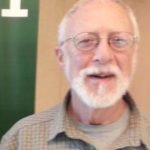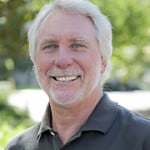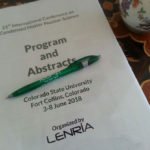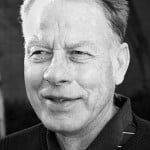 The soundtrack for HYDROTON A Model of Cold Fusion is available as a compilation at Bandcamp and was reviewed earlier this month by French music publication IndieRockMag.com. (g-trans English)
The soundtrack for HYDROTON A Model of Cold Fusion is available as a compilation at Bandcamp and was reviewed earlier this month by French music publication IndieRockMag.com. (g-trans English)
 Electronic musician Esa Ruoho a.k.a. Lackluster first put the sounds together for the science documentary on Edmund Storms‘ “nano-crack” theory of LENR. Filmed and edited by Ruby Carat, HYDROTON also features animation by Jasen Chambers.
Electronic musician Esa Ruoho a.k.a. Lackluster first put the sounds together for the science documentary on Edmund Storms‘ “nano-crack” theory of LENR. Filmed and edited by Ruby Carat, HYDROTON also features animation by Jasen Chambers.
From the review:
After gravitating around the Merck label in it’s heydays, this floridan equivalent of Warp until 2007, the finnish Lackluster now flies under the radar via small structures and today via autoproduction, relegated to the margins by musical media and lovers of electronic sounds — more interested today with pop and dansey incarnations –, like many specially-gifted craftmen of a now fringe of electronic music.
He has since broken away from IDM for more atmospherical experimentations, and we meet Esa Ruoho once again today with two beautiful ambient releases, a solo and a collaboration.
Iridescent pads (Circling), stellar blips (Wet Echoes Part XIV) and cascades of echoing keys (Fragrance), even without the gummy beats of the LAX EP, the Hydroton soundtrack sounds more like what this Helsinki native accustomed us to with his electronica moniker, which he’s using here.
Second collaboration with the documentary film-maker Ruby Carat from the Cold Fusion Now! collective which gathers researchers from all over the world, specialists of cold fusion, Hydroton gives music to a documentary on cold fusion theory of the same name. In this new video, Dr. Edmund Storms explains his model based on formation of hydrogen kernels tighter than usual in nano-spaces (gaps) of materials which can trigger a slow cold fusion with electrons, and give off energy as photos. It’s holiday-time so we won’t bore you with physics, however musically Lackluster orchestrates here an electron-microscope matter-ballet (Unveiling), an organic ambient but sufficiently abstract in its textural, pulsated loops to evoke a particle flow rather than cellular-life (Walls Low Ebb).
Here is a taste of the sounds:
Regarding working with Ruby Carat on a science documentary soundtrack, Esa says, “From my side, I decide I’m working on music for a soundtrack, and the things I record from then onwards are either “going towards it” or “being part of it”. I’ll also try and see what else would be sensible to add in – as in the piano track Fragrance, which felt like it would be a good theme for the credits.”
“In the case of the cold fusion documentaries, Ruby did ask me to create something with a low bass pulse, so I accepted that as one defining thing for the songs on the soundtrack – luckily that didn’t prove to be a limiting factor at all. The approach is the same to making sounds for performance; I don’t feel like there is anything specifically different from making soundtracks or playing freestyle, it’s all the same process.”
Esa Ruoho is also the Editor and composed the theme music for the Cold Fusion Now! podcast which brings the voices of cmns scientists to the public.
Esa says, “I’m happy to be involved in this landmark effort by Ruby & Cold Fusion Now! – because as far as I know, there’s not been a steady Cold Fusion / LENR/CANR podcast interviewing scientists, engineers and inventors. It feels like documenting an important point in time, and I hope the listeners are as inspired by the interviews as I am. I think more people should see these and hear the podcasts, as eventually work like this is gonna move the needle, when it becomes more popular.”
Attendees of the 21st International Conference on Condensed Matter Nuclear Science ICCF-21 all went home with a special ColdFusionNow.org flash-drive with conference abstracts, LENR science articles, and HYDROTON animations and audio files.
In the isolated LENR field where fact disappears by the cacophony of false claims, we believe it’s important to support the musicians and artists who have the courage to translate this science into words, images and sounds that draw the public into understanding.
Please purchase this compilation from Esa to show this work matters.
You can find lots of his work at https://lackluster.bandcamp.com/
In the words of Nikola Tesla:
It was the artist, too, who awakened that broad philanthropic spirit which, even in old ages, shone in the teachings of noble reformers and philosophers, that spirit which makes men in all departments and positions work not as much for any material benefit or compensation — though reason may command this also — but chiefly for the sake of success, for the pleasure there is in achieving it and for the good they might be able to do thereby to their fellow-men.
Through his influence types of men are now pressing forward, impelled by a deep love for their study, men who are doing wonders in their respective branches, whose chief aim and enjoyment is the acquisition and spread of knowledge, men who look far above earthly things, whose banner is Excelsior!
Gentlemen, let us honor the artist; let us thank him, let us drink his health!

See Cold Fusion Now! Collective notes, audio, and photos of ICCF-21!


 Our next episode features Alan Goldwater, an independent LENR researcher with the Martin Fleischmann Memorial Project.
Our next episode features Alan Goldwater, an independent LENR researcher with the Martin Fleischmann Memorial Project. Patreon is a platform for supporting creators. You can pledge as little as a dollar per episode and cap your monthly spending. Visit us on Patreon to sign-up and become a Patron!
Patreon is a platform for supporting creators. You can pledge as little as a dollar per episode and cap your monthly spending. Visit us on Patreon to sign-up and become a Patron!


 The soundtrack for HYDROTON A Model of Cold Fusion is
The soundtrack for HYDROTON A Model of Cold Fusion is  Electronic musician Esa Ruoho a.k.a. Lackluster first put the sounds together for the science documentary on Edmund Storms‘ “nano-crack” theory of LENR. Filmed and edited by Ruby Carat, HYDROTON also features animation by Jasen Chambers.
Electronic musician Esa Ruoho a.k.a. Lackluster first put the sounds together for the science documentary on Edmund Storms‘ “nano-crack” theory of LENR. Filmed and edited by Ruby Carat, HYDROTON also features animation by Jasen Chambers. 





